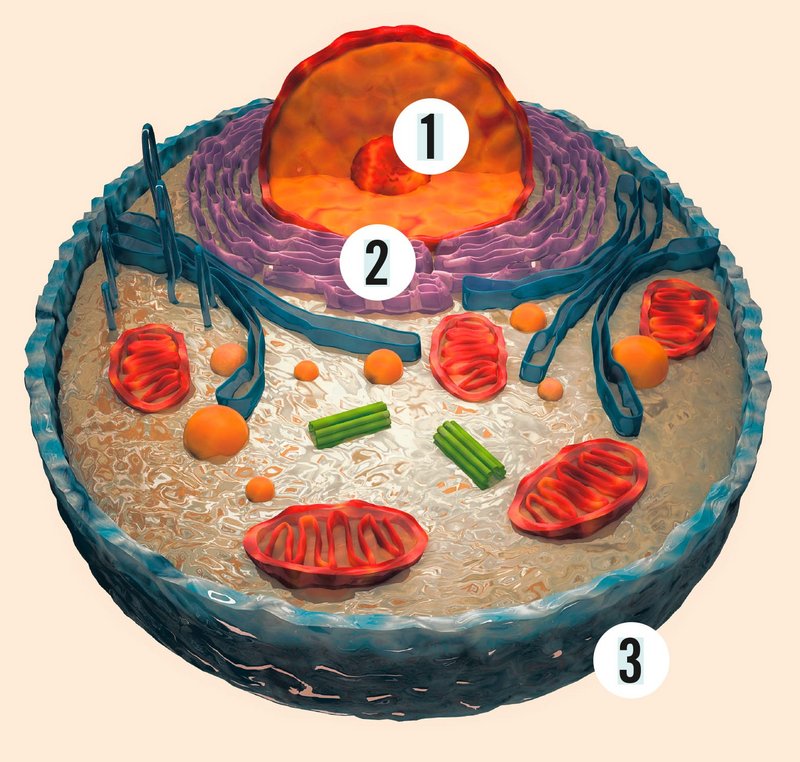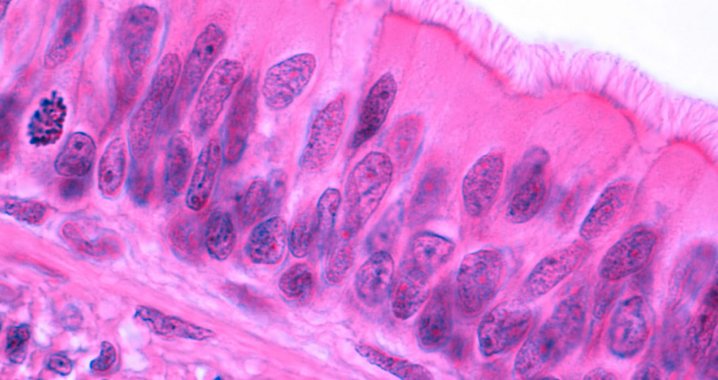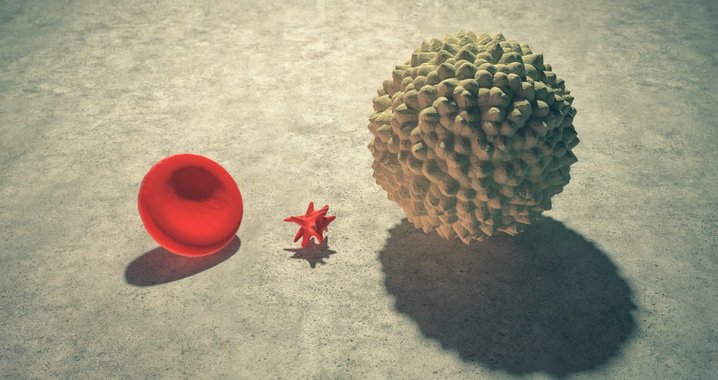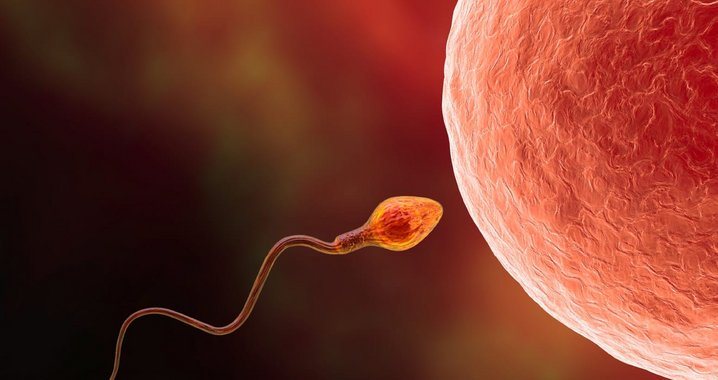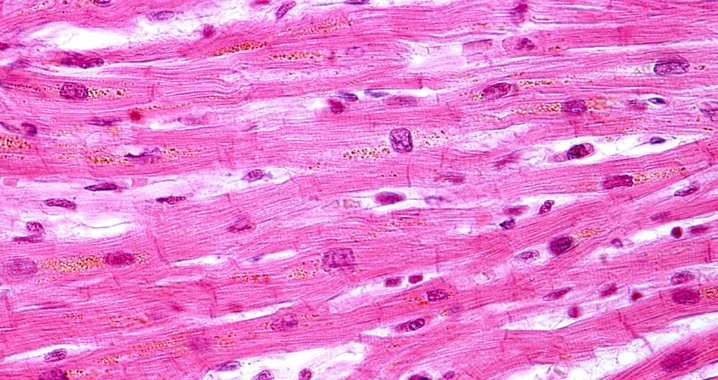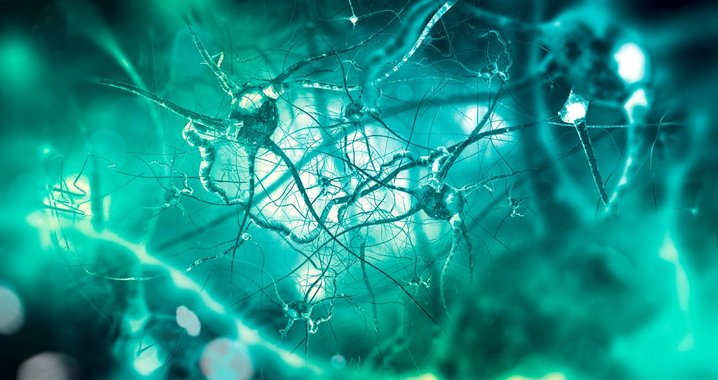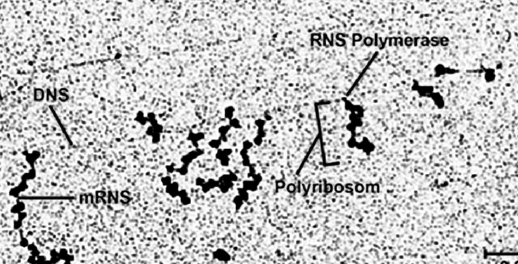The genetic information, DNA, is stored in the cell nucleus. DNA is the abbreviation for Deoxyribonucleic Acid. The genetic information of a cell is also known as the genome. The diameter of the nucleus of a human cell is about 150 times smaller than 1 millimeter.
Epithelial cells of the small intestine
Epithelial cells are found in the skin, intestine or glandular tissue. These cells perform various functions: Protection against microorganisms, production and transport of substances as well as sensory functions such transmission of temperature or pain. The cells in the small intestine are specialized for the exchange of nutrients. Small thread-like extensions enlarge the cell surface and thereby allow the cell to absorb and release more nutrients. The lifespan of an epithelial cell in the small intestine is only 1.5 days. Thus, in the small intestine there is a lively change of shifts.
Blood cells: Red blood cells, blood platelets, white blood cells
Red blood cells transport oxygen and carbon dioxide. Blood platelets ensure that the blood coagulates outside the body to avoid extensive bleeding in the event of an injury. White blood cells can be considered as the “immune police”. They play an important role in the defense against unwanted intruders such as viruses, bacteria and other pathogens. During their lifetime of 120 days, the 0.007 millimeter small red blood cells cover enormous distances in our bloodstream - estimates assume almost 500 km! White blood cells survive from a few hours to several years. They are between 0.007 and 0.02 millimeters in size. Blood platelets live for about seven days and, with their size of 0.001 millimeters, are the smallest cellular components in the blood.
Germ cells: Oocyte and sperm cell
The gametes of the woman are called oocytes, those of the man spermatozoa or sperm cells. The diameter of an oocyte measures about 0.1 millimeters and is a hundred times larger than a sperm cell. Oocytes are created once in a woman's life and are never renewed. In men, on the other hand, sperm cells are produced again and again throughout their lives. When an oocyte and a sperm cell merge, new life is created.
Heart muscle cells ensure that the heart contracts regularly and pumps the blood into the blood vessels. In the adult body, the muscle cells of the heart are renewed to a limited extent in contrast to other muscle tissues. The heart muscle cells work continuously: The heart contracts 100,000 times every day and pumps about 5 liters of blood into the body's circulation every minute.
A touch of the body, heat, cold, itching or burning - these are all stimuli processed by the nerve cells and transmitted as information to the brain. Nerve cells are specialized for the absorption and transmission of stimuli. The brain alone has an estimated 100 billion nerve cells.
Was bestimmt, dass aus einer Nervenzelle eine Nervenzelle und nicht eine Muskelzelle wird?
Damit der menschliche Körper funktioniert, hat jedes Organ seine speziellen Aufgaben und in jedem Organ befinden sich spezialisierte Zellen, die diese Aufgaben ausüben. Wie oben schon erwähnt, ist der Aufbau verschiedener Zellen in seiner Grundstruktur sehr ähnlich (siehe «Mikrokosmos Zelle»), obwohl die Zellen morphologisch (also in ihrer äusseren Gestalt) sehr unterschiedlich aussehen können. Fast alle Zellen eines Körpers haben das gleiche Erbgut (Ausnahmen sind rote Blutkörperchen und die Geschlechtszellen). Was bestimmt nun aber, dass eine Zelle im Gehirn nicht zu einer Muskelzelle, sondern zu einer Nervenzelle wird?
Dafür ist ein Prozess verantwortlich, der Genexpression genannt wird. Obwohl die gleiche DNA in den Zellen vorliegt, sind nicht die gleichen Gene «aktiv». Komplexe und stark vernetzte Mechanismen der Zelle bestimmen, welche Gene in welcher Zelle und zu welcher Zeit abgelesen werden. In einer Muskelzelle werden also viele andere Gene abgelesen als in einer Nervenzelle. Natürlich gibt es auch Gene (im Englischen spricht man von house keeping genes, also Haushaltsgenen), die eigentlich in fast jeder Zelle aktiv sind, denn sie sind für das Überleben der Zelle notwendig. Diese Gene werden somit immer abgelesen, in mRNAs kopiert, und dann vom Ribosom in Eiweissmoleküle (Proteine) translatiert. Daneben gibt es aber auch ein bestimmtes Repertoire von Genen, die nur in speziellen Zellen exprimiert (sprich: von der DNA abgelesen, zu mRNA gemacht, zu Protein translatiert) werden. Als Konsequenz hat dann eine Muskelzelle andere Eiweissmoleküle (Proteine) als eine Nervenzelle - nämlich genau diejenigen, die es braucht, um ihre besonderen Funktionen als Muskelzelle ausüben zu können. Zusammengefasst kann man somit sagen, dass unterschiedliche Zellen zwar gleiche DNA besitzen, jedochaber unterschiedliche Repertoires an RNAs, und, folglich, Proteinen. Der Prozess der Genregulation entscheidet demzufolge über die Identität und Funktion von Zellen.

